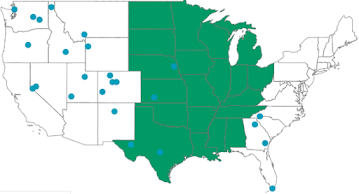 |
| The Osborne County Farmer is a weekly newspaper in Osborne, Kansas. (Photo by Jeremiah Ariaz, LSU) |
Nonprofit doesn't mean low pay: The boom in funding for nonprofit news organizations has made more of them them fully competitive with traditional news outlets, according to a study by the Institute for Nonprofit News. "The INN Member Compensation Study shows that salaries for editorial positions have grown significantly, with the average reporter salary jumping to $82,943 from $58,858 in 2020, when the first study was conducted. Benefits have markedly increased, too, with 86% of news organizations offering paid time off, compared with just over half in 2020," INN reports. Its chief network officer, Jonathan Kealing, said, “The financial benefits of working for a nonprofit news organization in the INN network have gotten better over time, and they compare favorably with advertised compensation packages at comparably sized legacy media outlets.”
 |
| Pew Research Center graph |
Paywalls have become an essential feature of the news business, so it can keep paying for journalism. But what sort of paywall fits what sort of market? In his free Second Rough Draft newsletter on Substack, former news executive Dick Tofel makes some key points: "Paywalls work only when a publication is producing high quality content in high quantity," and most don't do that often enough to attract a large digital following: "The average Gannett or Lee chain paper, for instance, has about 6,000 paying digital subscribers. That’s not enough to make this economic model work in the long term."
Also, the harder the paywall, the harder it is on people with less money. "Setting the meter at an economically optimal level is relatively easy for larger organizations, with big audiences and sophisticated analytic capabilities, but it’s much harder for smaller organizations, especially community papers that have neither," Tofel writes. "The growing economic dependence of these publications on their readers is having increasingly troublesome editorial consequences. This dependence, I think, is the principal source of the rising tide of consumerist features and the increasing celebration of luxury items and trends. Even worse, at least in my view, is what I am starting to see as a reluctance to challenge readers’ preconceptions."

















